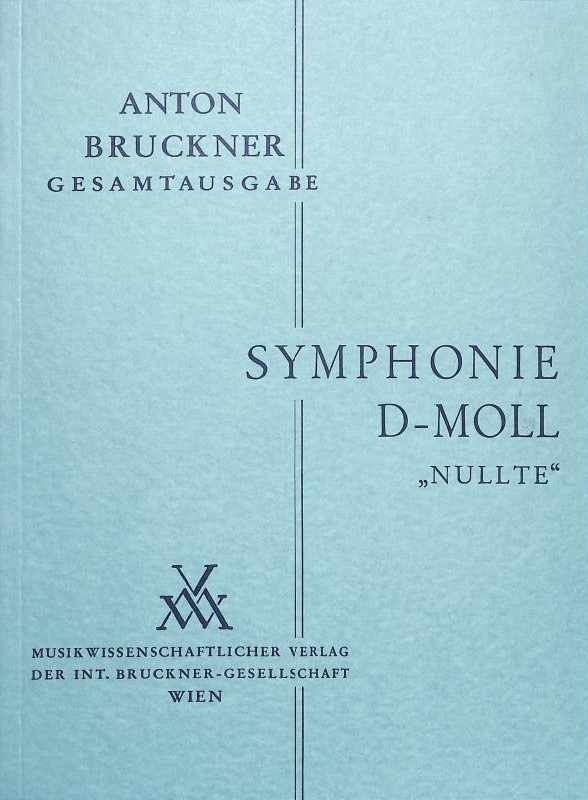Bruckner: Symphony 0
Like all great artists, becoming known as a symbol brings fame to even greater heights. Thus everyone should know Anton Bruckner's Symphony no. 0 as:
∅
Following Bruckner's Study Symphony no. 00 comes another rejected score, subtitled 'Nullte' due to the composer's rejection of it. One mustn't think too badly of Bruckner, for he had a Tchaikovsky-ian experience of competing schools of music. He simply listened to opinions from the wrong people.
Of course, this is still early Bruckner, but his musical hallmarks are much more in view compared to the earlier No. 00. Some confusion existed regarding the placement of Symphony no. 0. Numerically being placed between Symphonies 00 and 1 no longer adheres to chronology; instead Symphony no. 0 lies betwixt Symphonies no. 1 & 2 date-wise.
The form of the symphony is fairly traditional without Bruckner greatly expanding the genre into his own musical personality which will generate later. The key and tempo relationships are pretty standard from movement to movement, although these are all surface observations.
The first movement open with a soft, yet menacing march playing in the lower strings under sustained winds and moving violins. Lyrical episodes contrast, however it is the hectoring brass which maintain the d minor moodiness.
I would term the second movement as a religioso ala Mendelssohn, here in a faster Andante. Something about the hymn-like opening imbues me with this feeling. Bruckner pits the strings against the flute, oboe, clarinet, and bassoon, often having the music go back and forth between the two ensembles. These are certainly the most pastoral moments of the symphony, reminding me of its Study Symphony predecessor.
I don't find this the most frantic Scherzo to come from the pen of Bruckner, but the composer's love of a lively third movement was apparently always an interest. This one features stinging brass and chromatic lines among the swirling triple meter. Perhaps it is just me, but the repeated bass notes at the beginning of the Scherzo remind me of the Overture from the Barber of Seville every time they appear. Bruckner pulls way back on the Trio, which moves into G Major, although he twists around outside of the key quite a bit too.
The Moderato finale is almost a surprise, but a nice set-up of the acceleration into the faster Vivace. For me, this is a bit of a let down compared to the rest of the symphony. Some of my feeling comes from the length which doesn't quite make the work sound symmetrical. The first two movements are far more substantive, and then the final two movements whirl off quickly.
I will say, the appearance of contrapuntal and imitative material is an excellent sight to see, for Bruckner was so good at such things. The motive contains an octave downward leap followed by an octave-and-a-third leap back up. This makes for a heroic, yet terrifying musical theme, especially when the brass are allow to really wail on it.
Symphony no. 0 is fairly easy as far as editions are concerned. Nowak is really the only version performed, however there were a few recording made of Voss. Bernard Haitink and Edward van Beinum lovers are stuck with that edition. Most recordings sit around the 41 - 43 minute mark. Outliers include the very fast Sir Georg Solti at 38 minutes, and well-known conductors such as Simone Young, Christian Thielemann, Andris Nelsons, and Lorin Maazel closer to 50 minutes.
Personally, early Bruckner music rarely needs dwelling upon. The more direct and to the point satisfies me without my mind wandering away from the music. Of course, this is a terrible generalization, but a starting point from this listener.
1990: Inbal
1992: Mehta
1995: Solti
2013: Young
2015: Schaller
2022: Poschner

